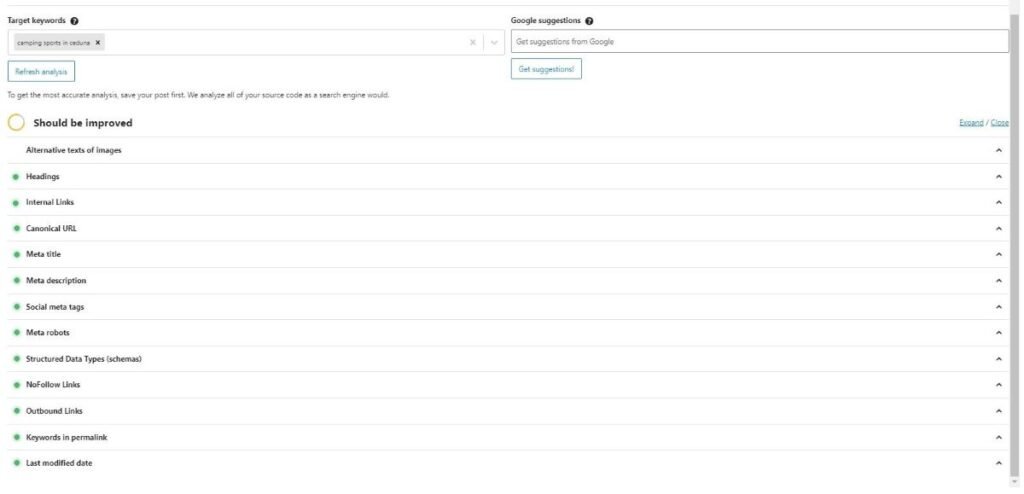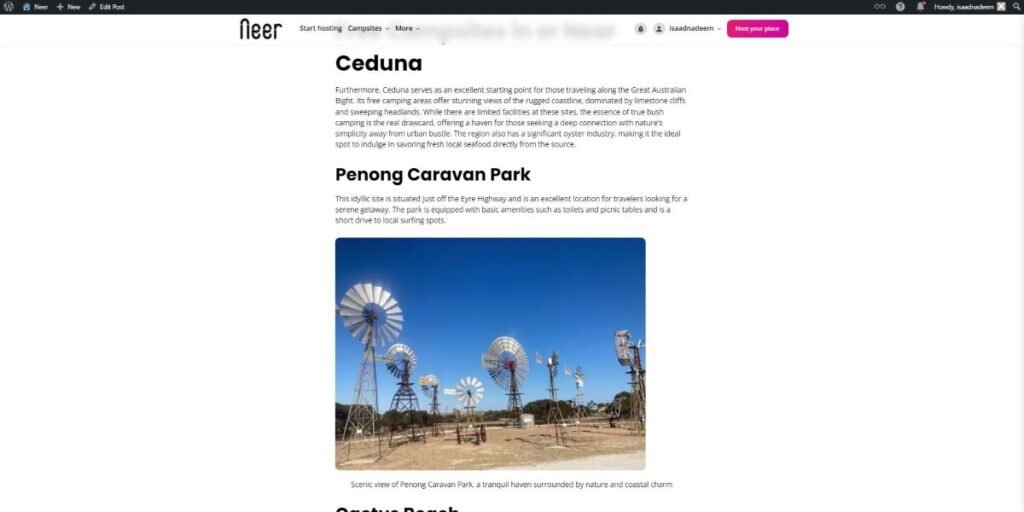Neer
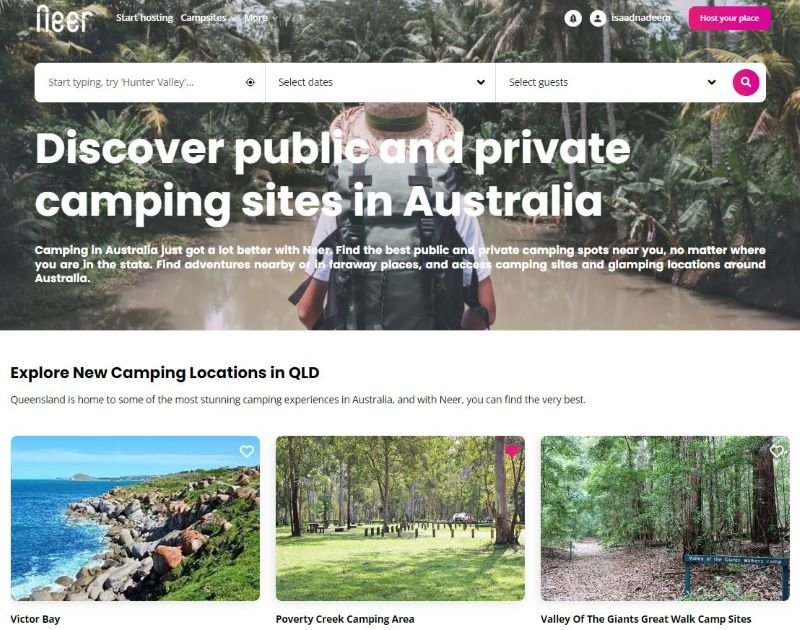
About Website
Neer is a platform for finding public and private camping sites across Australia. It offers various types of accommodations, such as cabins, glamping, and powered, and unpowered campsites. Users can explore different locations by state, including Queensland, Victoria, and New South Wales, and can use an interactive map and ratings to discover camping spots. The site also allows users to host their places for camping.
I Have Worked With
About Project
Neer was looking for an On-page SEO specialist to work on a real estate-type WordPress website, with a commitment of 30-40 hours per week over 3-4 months.
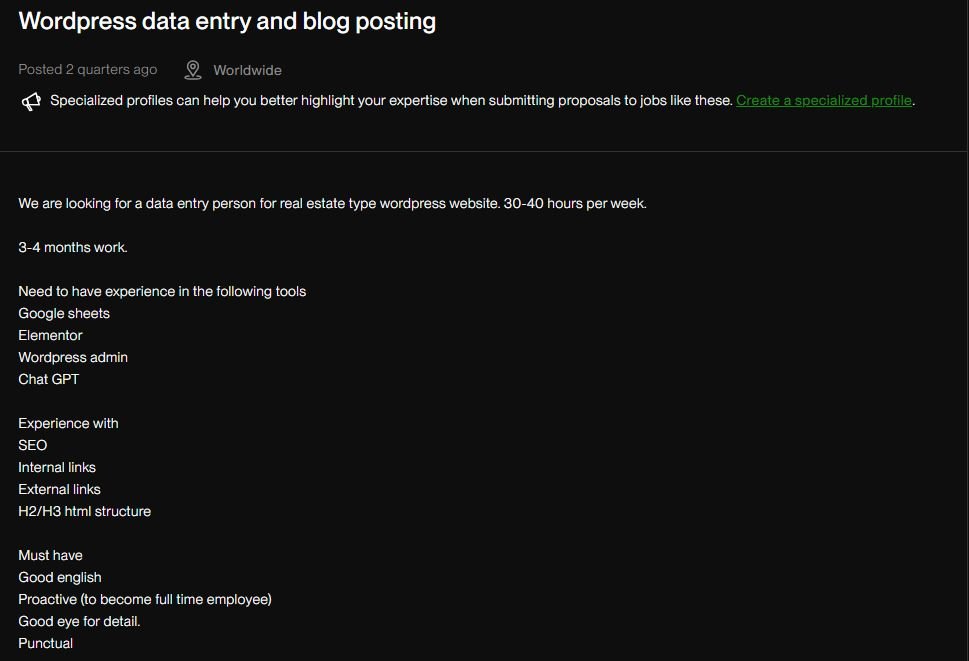
The ideal candidate needed experience with tools like Google Sheets, Elementor, WordPress admin, and Chat GPT. Additionally, they sought someone knowledgeable in SEO, internal and external links, and H2/H3 HTML structure. The requirements also included good English proficiency, a proactive approach with the potential to transition to a full-time role, strong attention to detail, and punctuality.
Project Details
The first step in the content management and optimization process was securing access to the WordPress website. As WordPress is the primary content management system (CMS) used for the camping and caravan site, I needed to access its backend. This access allowed me to navigate the various blog posts, pages, and settings that required updates. Through the WordPress dashboard, I could view and edit blog pages, update content, and make all necessary adjustments to ensure the material aligned with SEO and content marketing strategies.
First Steps
Simultaneously, having access to Google Sheets played a significant role in organizing and managing the content efficiently. Google Sheets was utilized to maintain a well-structured content calendar, track progress, and record changes made to each blog post. Every article had a corresponding entry in the spreadsheet. This helped in maintaining a clear workflow and ensuring that all details were meticulously tracked.
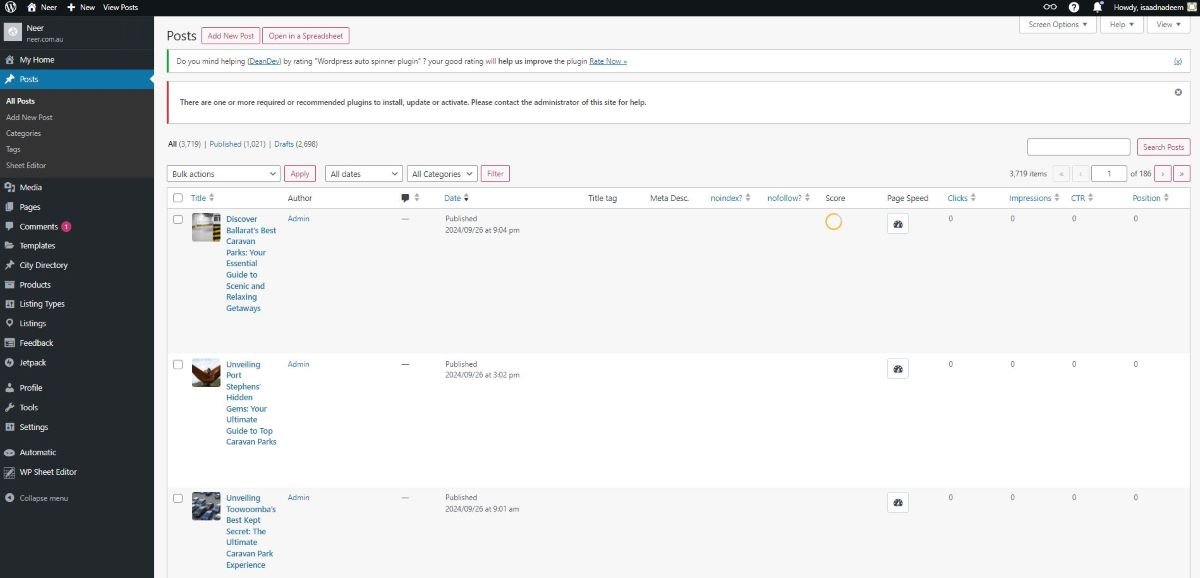
My main goal was to make each blog post on the camping and caravan site not just informative but also optimized for both search engines and users. I began by going through each blog page, reviewing the existing content, and identifying areas for improvement. The focus was on improving the content structure, incorporating SEO best practices, and enhancing the overall readability.
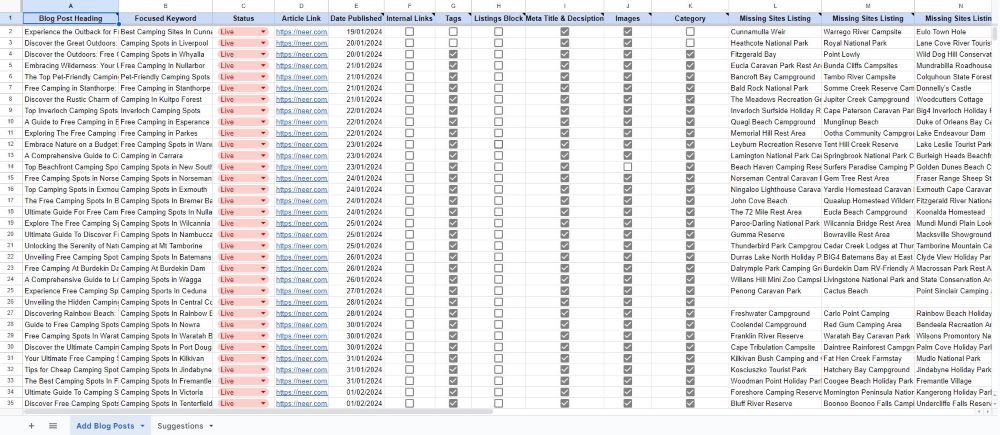
WordPress Article Backend
One of the most crucial elements of content optimization was creating and refining meta titles and meta descriptions for each blog post. For each blog post, I reviewed the content to identify the most relevant keywords and themes that should be reflected in the meta title and meta description.
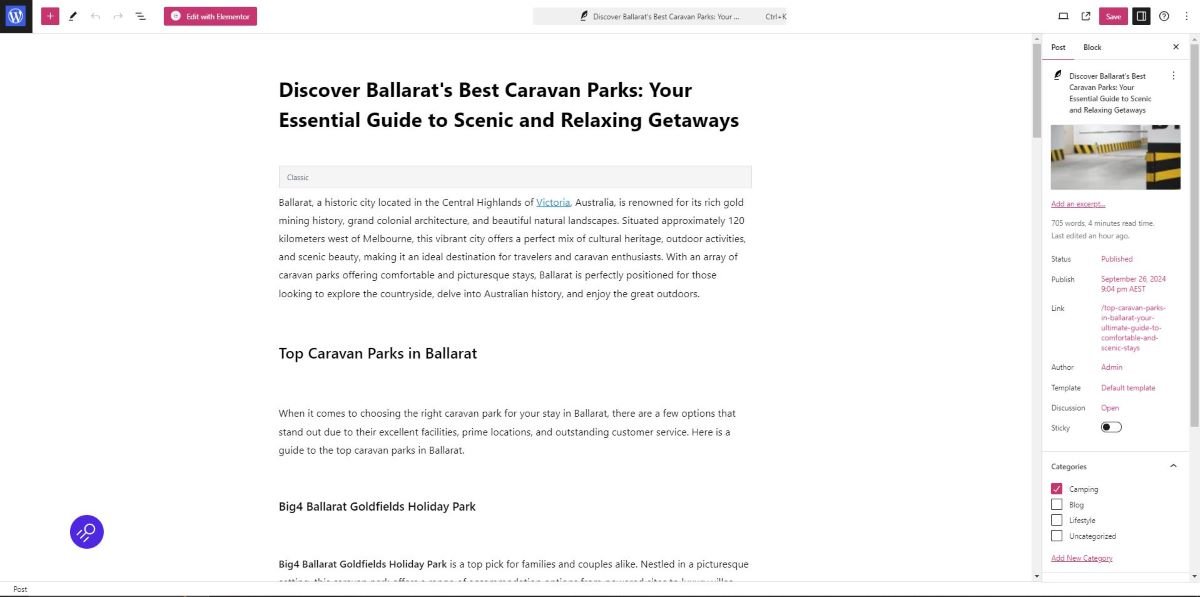
For example, if the blog post was about the best camping sites in a specific region, I ensured that the meta title included location-specific keywords to target users searching for camping spots in that area. The meta description would then succinctly describe the content, highlighting key features like popular camping grounds, amenities available, or tips for campers.
Meta Title and Meta Description Settings
Apart from adding meta details and links, an important part of the optimization process was ensuring that the structure of each blog post was clear, logical, and easy to read. This involved utilizing proper HTML tags, particularly H2 and H3 headers, to create a hierarchy within the content. Each blog post was reviewed to identify key sections, and headers were added or adjusted to make the content more scannable.
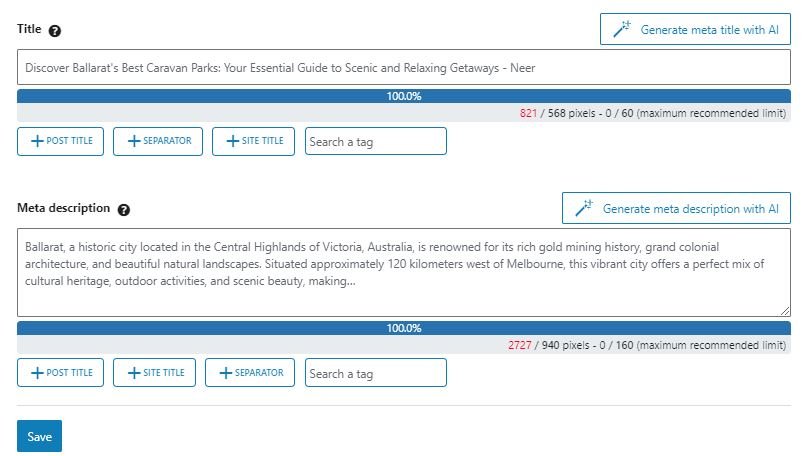
Article Structure And Header Tags
In addition to optimizing textual content, adding high-quality and relevant images to each blog post was a priority. Each blog post was reviewed to identify opportunities to insert images that complemented the content. Whether it was a post about picturesque camping sites, essential caravan equipment, or tips for a great camping trip, I ensured that appropriate images were selected.
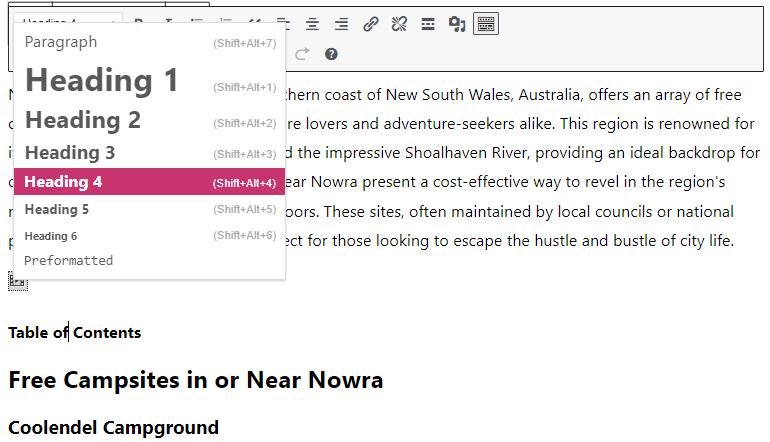
These images were then properly tagged with alt text, which not only made them accessible to all users (including those using screen readers) but also provided additional opportunities for keyword optimization, contributing to the overall SEO of the page.
Image Optimization
During the optimization process, I carefully inserted both internal and external links throughout the blog content. By thoughtfully placing internal and external links, I aimed to improve the flow of information for readers, keep them engaged on the site longer, and enhance the SEO value of each blog post.
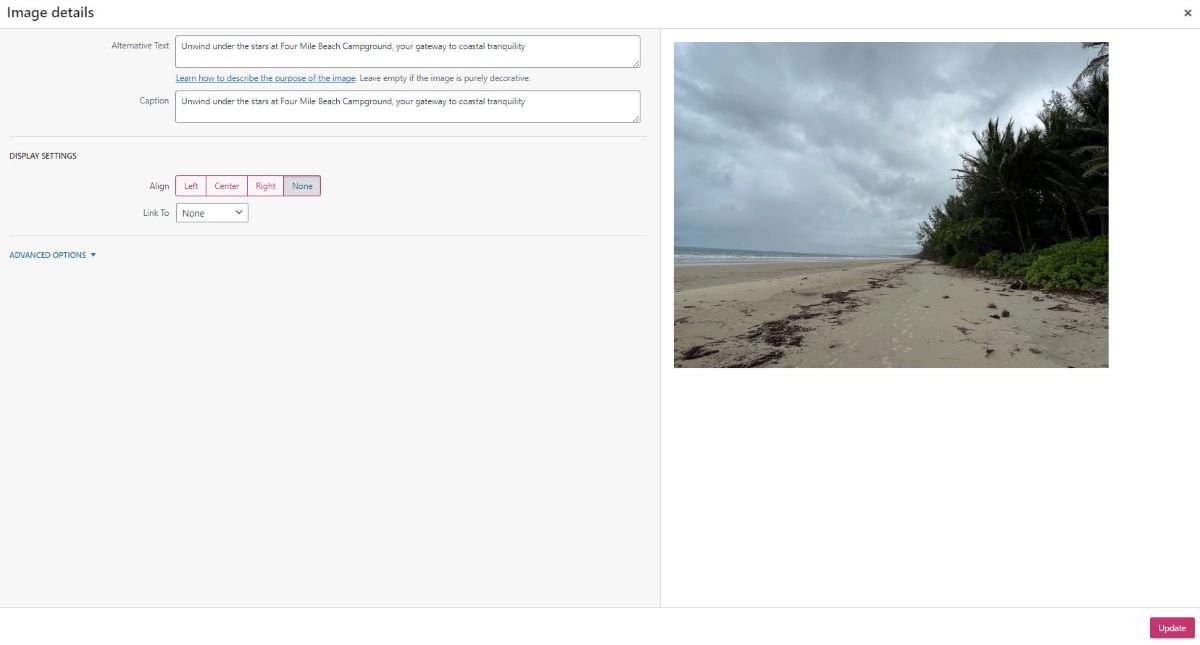
Linking Strategy
The final step in the content optimization process was to ensure that each article was fully polished and ready for publication before sending it to Sanjay for review. This involved a thorough final check to confirm that all meta titles and descriptions were appropriately crafted, images were correctly tagged and placed, internal and external links were functional and relevant, and the overall article structure was clear and user-friendly.
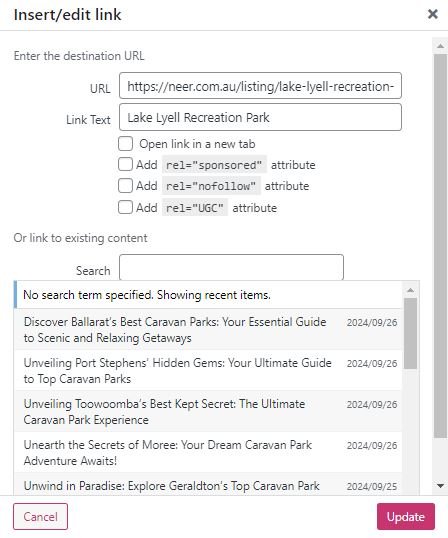
Final Checklist
Once all the checks were completed and confirmed, the content was ready for the final review, ensuring that it was polished and thoroughly optimized before going live.
